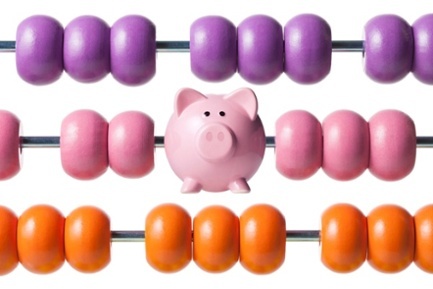Mark Jewell's Blog: Selling Energy, page 221
January 6, 2018
6 Skills Everyone Should Work to Improve
Here at Selling Energy, we encourage our team members to empower themselves by constantly improving their own professional development. Besides learning new software skills, we also believe setting oneself up for being in the right mind to succeed and grow is important. For today’s blog on productivity, we are sharing The Muse’s article on “6 Life Skills You Better Pick Up if You Want to Succeed at Work.” Our favorites include mindfulness throughout all aspects of work, resilience when the going gets tough, and empathy for your peers, leaders and clients. For the full article, see here.
The post 6 Skills Everyone Should Work to Improve appeared first on Selling Energy.
January 5, 2018
Communication Strategies
I talk a lot about communication strategies on this blog because effective communication is vital to success in sales (see last week’s “Successful Communication – It’s Your Responsibility ” blog). There are so many well-intentioned technologists, well-intentioned scientists, well-intentioned building experts, and even well-intentioned salespeople who take a haphazard approach to communication. Without the ability to communicate exactly what they’re trying to say, they’re unable to grab the attention of their audience effectively.
Here’s a question that you should ask yourself before you go to market, whether you’re writing a proposal, making a telephone call, or even composing a simple email: “What does my listener or reader need to know in order to understand and take action?” Everything else is irrelevant. What does the person need to know? What are the action items? It may sound obvious, but if you don’t reinforce this idea in your mind (and take action yourself to ensure that you’re thinking about this before you communicate with someone), you’ll have difficulty moving projects forward.
The post Communication Strategies appeared first on Selling Energy.
January 4, 2018
Safe Estimates
Let’s say you’re preparing a cost/benefit analysis for a proposed efficiency upgrade. The worksheet incorporates your best estimates for energy savings, maintenance savings, rebate eligibility, and inflation as well as your prospect’s assumptions for discount rate, finance rate, and reinvestment rate. When selecting which rates to use, you’ll want to be conservative.
Take inflation, for example. If you present a CFO with a spreadsheet that assumes an inflation rate of six percent (a high estimate for a ten-year analysis, but not impossible), you risk losing credibility. Remember, you’ll likely have less than 30 minutes to convince this person that your project is worth funding. Do you really want to spend the first eight or nine of those minutes quibbling over inflation rates? If you can get the numbers to work using a lower figure (e.g., two percent), the CFO is not going to argue with you. If anything, he or she may say, “I notice you’ve used inflation assumptions that are lower than the ones we use when we do our own analyses.” You might respond, “We were intentionally conservative. Besides, if we raise the inflation rate, we may have to adjust the nominal discount rate as well, which would have the effect of neutralizing the increase in assumed inflation.” Of course, if you’re convinced (and can defend the position) that energy inflation will outpace the rate of general inflation, you could use a “real price escalator” for energy, in which case your discount rate could stay the same and the NPV of the project would rise.
So what’s the moral of the story? Don’t give your prospect the opportunity to question your estimates. Be realistic and conservative, and let the prospect come to the realization that the project may yield even higher returns than you are predicting.
The post Safe Estimates appeared first on Selling Energy.
January 3, 2018
Don’t Fear the C-Suite
If you don’t have much experience selling to the C-Suite (CEO, CFO, COO, etc.), it can seem like a daunting task. In reality, it’s only daunting if you’re not prepared – both in terms of what you plan to say and what you expect your audience to care about.
We carefully address C-Suite selling at every Efficiency Sales Professional Boot Camp because far too many salespeople still get nervous in the boardroom environment. Today, I’d like to share a paper that was published by the International Energy Agency and the Institute for Industrial Productivity called, “The Boardroom Perspective: How Does Energy Efficiency Policy Influence Decision Making in Industry.”
While this paper focuses primarily on the influence of energy efficiency policy on C-Suite decision-making, it provides some great insight into the types of questions C-level execs are inclined to ask, and the core values that each one is responsible for upholding. With this knowledge, you as a sales professional are better equipped to approach the boardroom with confidence… and to close the sale! Flip through this paper and see what new insights you might add to your toolkit:
https://www.iea.org/publications/freepublications/publication/Boardroom_perspective.pdf
A few additional thoughts before closing…
This paper is set in an international context, so you’ll need to adjust its findings a bit to reflect C-level decision-making in the US market.
The financial measures mentioned throughout the paper suggest that “Challenger Selling” is in order – if for no other reason than migrating the discussion from SPP/ROI/IRR to more proper metrics when evaluating projects for funding approval.
Finally, as you walk into any C-level office, ask yourself what that particular officer does for a living and what yardstick is used to measure his or her own success at the company. For example, the board hires a CEO to manage an enterprise and to grow its valuation. It should be no surprise that you need to answer the following two questions during your concise presentation: How will what you are proposing make his/her enterprise easier to manage? How will what you are proposing make his or her enterprise more valuable? If you are unwilling to think through the answers to those two questions – connecting the dots between what your offering provides and what this prospect actually seeks – then you risk wasting both your time and your prospect’s.
The post Don’t Fear the C-Suite appeared first on Selling Energy.
January 2, 2018
Top 5 Blog Posts of 2017
Happy New Year! We would like to take this opportunity to thank all of the stakeholders who have contributed to Selling Energy’s growth and success in 2017: our training sponsors and graduates; our Segment Guides™ licensees; our Silver, Gold and Platinum Members; and, of course, everyone else who has enjoyed our blog, book, keynotes, coaching calls, and other resources.
To get everyone back on track after the holidays, we wanted to share our five most-viewed blogs from 2017 in case you missed any of them…

When’s the Best Time to Ask for a Referral?

Use Emphasis to Your Advantage


Energy Efficiency Retains Tenants

The post Top 5 Blog Posts of 2017 appeared first on Selling Energy.
January 1, 2018
Turbocharging Your Sales Machine
Happy New Year Friends!
I’m glad that I came across Chet Holmes’ The Ultimate Sales Machine recently. He not only believed in focusing your efforts but streamlining them until you’re efficient and unstoppable. As a whole, the book is a callback to a notable quote from Bruce Lee: “I fear not the man who has practiced 10,000 kicks once, but I fear the man who has practiced one kick 10,000 times.”
Unfortunately, Chet Holmes passed away from leukemia in 2012. However, his message holds up and compliments what we promote at Selling Energy. Today I want to further his mission. The Ultimate Sales Machine believes that training yourself (and your staff) is imperative. And not only that – you don’t stop there! Keep training. Keep learning. Don’t just sell your product, sell yourself and everything you have to offer. Make an effort to speak to the most important people and make your message clear and imperative.
If you’ve attended one of my classes this may seem like old hat, but Holmes puts his own spin on being successful at sales. If you’re looking for some enriching material to read in your spare time, look no further.
Here is the book summary from Amazon:
“Chet Holmes helps his clients blow away both the competition and their own expectations. And his advice starts with one simple concept: focus! Instead of trying to master four thousand strategies to improve your business, zero in on the few essential skill areas that make the big difference.
“The Ultimate Sales Machine shows you how to tune up and soup up virtually every part of your business by spending just an hour per week on each impact area you want to improve- sales, marketing, management, and more.”
The post Turbocharging Your Sales Machine appeared first on Selling Energy.
December 31, 2017
Weekly Recap, December 31, 2017
Tuesday: Take responsibility for the quality of your communication.
Wednesday: Explore how to be like a personal trainer and motivate your prospect.
Thursday: Learn the difference between relationship-selling and challenger-selling.
Friday: Learn more about the 30-day practice.
Saturday: Check out this article for the right way to make a to-do list and set realistic goals.
The post Weekly Recap, December 31, 2017 appeared first on Selling Energy.
December 30, 2017
Your To-Do List Might Be a List of “Don’ts”
It’s been said before and I’ll say it again: when it comes to making goals, make sure they’re realistic! Even when it comes to tackling a household project it’s easy to become overwhelmed. This is when the term “baby steps” can be helpful, which are an indispensable way to break down the age-old questions, “What do I do next and how do I do it?
Recently I encountered this article by Laura Vanderkam, showing the right way to make a to-do list and set realistic goals. To read more about what not to do, you can check out Vanderkam’s advice here.
The post Your To-Do List Might Be a List of “Don’ts” appeared first on Selling Energy.
December 29, 2017
30-Day Practice
Whether or not you decide to start 2018 with particular resolutions in mind, challenging yourself to new goals can help bring about confidence in different areas of your life. If keeping resolutions for 365 days sounds unappealing, we recommend considering a shorter period of time – 30 days!
Years ago, Matt Cutts, a Google software engineer, shared his experience with 30-day challenges. From writing a novel to climbing Mt. Kilimanjaro, Matt not only found his self-confidence growing, but also became more aware and intentional of how he spent his time.
If you’re interested in learning more about the 30-day practice, watch his quick, three minute TED talk.
Here’s a summary from TED:
Is there something you’ve always meant to do, wanted to do, but just … haven’t? Matt Cutts suggests: Try it for 30 days. This short, lighthearted talk offers a neat way to think about setting and achieving goals.
The post 30-Day Practice appeared first on Selling Energy.
December 28, 2017
Relationship Selling vs. Challenger Selling
As most of you know from reading this blog, I’m a big proponent of challenger selling. I’ve written about the benefits of challenger selling and the downsides of relying on relationship-building to close sales. Today, I’d like to offer a scenario that highlights the differences between these two approaches.
Suppose a prospect says that they will approve an efficiency project only if it has a two-year payback or less. A salesperson that uses relationship-selling strategy would probably tell his or her prospect, “Okay. Well let’s try to find you something that has a two-year payback or less.” Assuming there is a solution that fits this restrictive condition, the salesperson will be able to make a sale. Unfortunately, this sale will probably be smaller than one without such strict payback constraints, and the salesperson will be throwing away the potential for a much larger one.
In the same situation, a challenger seller would say something like, “Well we could probably find something with a two-year payback or less; however, if we did so you’d probably be harvesting only the very lowest-hanging fruit and leaving 90% of the energy savings potential in the tree. Do you know any farmer who only harvests the lowest-hanging fruit?” A sales professional would then zip it and give the prospect some time to ponder this question. Chances are the prospect will realize that they’re wasting potential savings by limiting themselves to a payback period of two years.
So what’s the moral of the story? Being the agreeable, nice salesperson doesn’t work. If you’re afraid to give your prospects a gentle push, you’re leaving both energy savings and money on the table.
The post Relationship Selling vs. Challenger Selling appeared first on Selling Energy.
Selling Energy
- Mark Jewell's profile
- 7 followers



